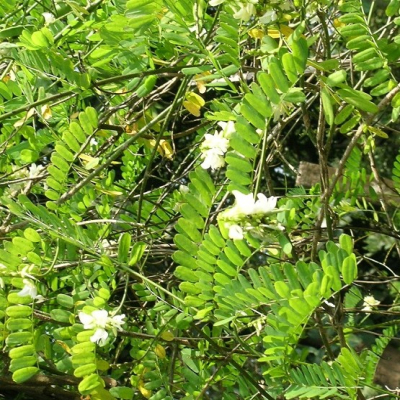Distribution and Habitat: Plains and hills of India
Botany: A deciduous dextrose woody climber with slender flexible and tough branches, the stem attaining 4.5 m height.
- Leaves: Alternate, pinnately compound with numerous deciduous leaflets. Leaflets thinly membranous, rounded at both ends, 10-20 in opposite pairs.
- Flowers: 1-1.25 cm long, pink, axillary, pedunculate raceme 5-10 cm long, shorter than leaves. Flowers subsessile pale purple to yellowish.
- Pod: Turgid, thinly pubescent, with a sharp deflexed beak.
- Seeds: Glossy, ovoid, scarlet with a black spot round the hilum or black with a white spot or uniformly black or white
Properties: Cytotoxic, antifertility, abortifacient, antidermatic, antidermatic, anti-inflammatory, antirheumatic, aphrodisiac, diuretic, stomachic
Chemical constituents: Abrine, abralin and albumotoxin, cholanic acid, trigonelline and its gallic acid esters
Uses:
- Roots and leaves used against cough, pharyngodynia, pectoralgia, inflammation, strangury.
- Leaves are chewed to relieve the pain due to ulcer in mouth.
- Seeds are used for skin diseases, wounds, alopecia, asthma, fever, tubercular glands, and hyperdipsia
Propagation: Seeds or cuttings of firm shoots.



